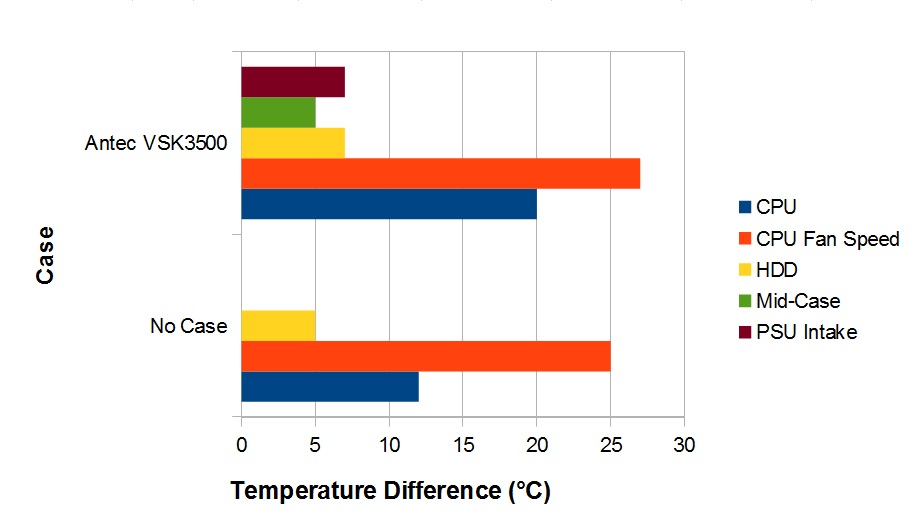Installation
The test system I will be using for this build has the following parts:
- AMD Phenom II X6 1090T
- CoolerMaster Hyper TX3 Evo CPU Cooler
- Gigabyte GA-MA78LMT-S2 Motherboard
- 4GB Samsung DDR3 RAM
- 80GB Seagate HDD
I will be using the bundled Antec VPA500P Power supply (which I have re-capped since the review). Rather than relying on software for the temperature readouts, I will be using an Aerocool X-Vision 5.25″ Fan controller, which will monitor up to five different locations in the case. It will be used to monitor the intake air temperature, the temperature in the middle of the case, the CPU, the PSU intake and the HDD.
This case doesn’t have any way of tucking extra cables behind the motherboard tray, so there are a few visible bundles of cables. At least the included PSU doesn’t have an awful lot of cables, so there aren’t too many excess cables. The cables I didn’t use were bundled up with the ATX Connector.
Two of the supplied standoffs are the plastic snap-in type. I used one of them as an anchor point for a zip tie for the front panel headers, which helped to keep them off to the side.
The VSK3500 uses a blue power LED and a red disk activity LED. Both LEDs are very small, and would hardly be noticeable unless you were looking for them.
Test Results
As expected, the CPU ran a bit warmer in this case than what it did with the motherboard just sitting on the test bench. With no case, The CPU was 12°C Warmer than the ambient temperature (under load with Intel Burn Test) with the fan running at 2500RPM. In the case, it was 20° warmer with the fan running slightly faster (2700RPM). The HDD was only 2°C Warmer inside the case than out, and the case in general was between 5 and 7° warmer than the ambient temperature. This isn’t too bad for a Micro ATX case, and is much better than I’ve seen with some cheap generic cases. The bundled rear fan wasn’t overly loud, but it was certainly not silent. It was audible with the PC idling, but with the CPU under load, the CPU fan drowned it out.







